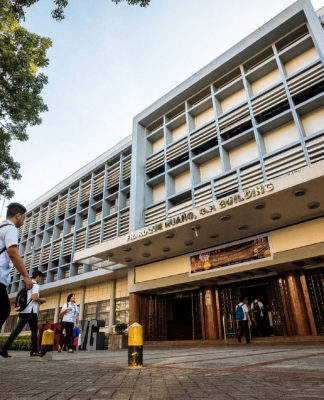CITY HALL’S plan to turn Manila into a “WiFi city” is off to a “slow” start.
Excitement turned to disappointment for some after the installation of free WiFi (wireless fidelity) Internet access in selected waiting sheds, due to sluggish connections.
Skeptics also claimed that the “ERAP-ISKO WiFi” project was a only publicity exercise for Mayor Joseph “Erap” Estrada and Vice Mayor Isko Moreno, that could also make it easier for snatchers to run away with commuters’ electronic gadgets.
A city official however explained that the free WiFi service is actually part of the long-term program Linking Enterprise and People (LEAP) 2025, under which Vice Mayor Moreno aims to transform the Philippine capital into the first WiFi city in the country.
One of LEAP 2025’s aims is to provide free Internet access to students, especially those in the university belt area.
There are five external access points for WiFi connection near UST from the waiting sheds in front of Gate 2 and at P. Noval Street extending up to Lerma Street. UST was the first university to have free Internet access courtesy of ERAP-ISKO WiFi.
“It’s the most noble project that will benefit the students [because] it does not require millions and millions of pesos,” said Edgar Ruado, head of Moreno’s political bureau. WiFi-enabled waiting sheds costing P1.4 million each, which were introduced last September, were imported free from China, he said.
LEAP 2025 is patterned after that of Seoul, the South Korean capital said to have the cheapest, fastest, and widest free broadband connnection in the world.
WiFi connection draws flak
Some netizens and Thomasians criticized the slow Internet connection, however.
Ruado said it was expected, but users should not complain because they were not being charged for it.
“Beggars cannot be choosers. Siguro kapag may advertisements na, we will increase the bandwidth and we will provide more access points,” he said.
Installing WiFi-enabled waiting sheds could attract snatchers. “Only a few courageous people will even dare to pull their phones from their pockets. Whether the government admits it or not, a huge number or snatchers and pickpockets are scattered around the city,” journalist Phoebe Magdirila said in her online article on Yahoo News.
The city government “cannot assure security” but can provide police visibility and closed-circuit television cameras in waiting sheds, Ruado said.
Ruado also said all Manila public schools would soon be provided with free Internet connection.
But the city government won’t release funds to the program as much as possible, because there are other priorities like social services, health, and education, he said.
“The city of Manila is bankrupt right now. Malaki ang utang because of the past administration so we’re doing this through the help of the private sector either for free, through donations, or through advertisements,” he said.
The city government has partnered with Fatpipe, a Filipino-owned solutions provider, allowing Internet connections at some waiting sheds in exchange for advertisements from sponsors.
The company will earn 30 centavos per click.
‘e-barangay’
Eduardo Quintos, fourth district councilor, said the main goal of LEAP 2025 was “to have everybody connected to the technology” by offering it for free to all sectors of society.
“We’ll make it available to the [ordinary] people of Manila, not just to the rich,” Quintos said.
Local officials plan to engage the community in interacting with city hall and barangay offices through the use of social media.
The effort was dubbed “e-barangay.”
“By 2025, everything will be done electronically through the use of Internet. We are also planning to modernize the affairs of the barangay, including the payment of real estate taxes and getting the blotter certificate,” Ruado said.













